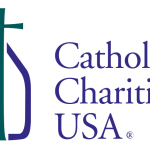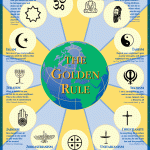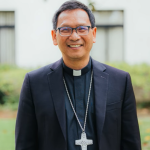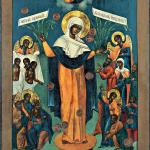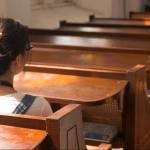San Pedro Sula, Honduras, Sep 6, 2016 / 01:09 pm (CNA/EWTN News).- He was only 22 years-old, and he was only there for nine months. But U.S. Senator and Democratic vice-presidential hopeful Tim Kaine credits the time he spent with a Jesuit community in Honduras as so formative and influential that it would spark the beginning of his thirty-plus-year political career. Yet far from an idyllic situtation of youthful self-searching, Kaine encountered a deeply complex and violent political scenario - one that he would later describe as "the turning point" in his life. Kaine, the former Governor of Virginia and first term Senator, was chosen by Hillary Clinton in July as her running mate for the Democratic Presidential ticket. In Kaine’s acceptance speech at the Democratic National Convention, he addressed the convention saying, “I taught kids how to be welders and carpenters.” Then switching to Spanish he repeating twice, “faith, family and work” and touted his experience in Honduras as one where he “got a firsthand look at a dictatorship. A dictatorship where a few people at the top had all the power and everybody else got left out.” Born into a Catholic family, Kaine attended the Jesuit prep school Rockhurt High in Kansas City. There he participated in mission drives to fund the Jesuits' activities in Honduras, visiting the country briefly in 1974 to present the proceeds. In 2014 he told Rockhurst's newspaper, Prep News Online, that “I vowed to return one day and was able to take a year off law school in 1980-81 to go back and volunteer with wonderful Missouri province Jesuits and their Spanish and Honduran counterparts, who worked hard everyday to live and preach the Good News among the poor in Yoro Province.” “What I learned that year from the Jesuits and the comunidad put me on a public service path that has now stretched to 30+ years as a civil rights lawyer, teacher and elected official,” he continued. According to the Washington Post, Kaine said in 2005: “I made a decision when I came back from Honduras … that I am not going to focus on making as much money as I can make. I am going to focus on doing things where I can serve people.” In a 2010 interview with CNN, Kaine described his time in Honduras, when he was 22, as “the turning point in my life. I was at Harvard Law School and didn't know what I wanted to do with my life … The most powerful memory was the great people I met there who convinced me that a life of serving others was the way to be happy.” And during a November 2014 visit to Honduras, Kaine stated that “I think of El Progreso everyday. The people, aside from my family, are the most important in shaping who I am today.” El Progreso is the city, located fewer than 20 miles southeast of San Pedo Sula, where Kaine spent nine months volunteering with the Jesuits. He visited the city again in February 2015, commenting, “El Progreso is extremely special to me. My experience working at Loyola taught me the importance of access to skills-based training – both in Honduras and the U.S. – and inspired me to pursue the issue of expanding career and technical education in the U.S. Senate.” In a June 7, 2016 interview with C-SPAN, Kaine said that his experience with the Jesuits put him “in a seeker mode where it pushed (him) not to just accept what (he) had been taught” but encouraged him to seek his “own answers.” The Jesuits, he said, were an important part of his transition to adulthood, where he didn’t just accept the answers he was given by what he has described as his devout, Irish Catholic parents. At the time of Kaine's 1980-81 volunteer work in Honduras, the country has been ruled by the military for 17 years. He told Prep News Online that “when I lived in Honduras under a military dictatorship that deprived people of even the right to vote, I learned to value what we have and do my little bit to protect and better it.” In 1980, each of Honduras' neighbors were gripped in civil wars between right-wing military governments and left-wing revolutionaries: Guatemala's had started in 1960, and El Salvador's in 1979. To the south in Nicaragua, the Sandinista National Liberation Front had ousted the Somoza dictatorship in 1979, but fought counterrevolutionaries throughout the 1980s. The Council on Foreign Relations noted in 2012 that “Honduras did not have a civil war of its own, but nonetheless felt the effects of its neighbors’ conflicts; it served as a staging ground for U.S.-backed Contras, a right-wing rebel group fighting Nicaragua’s Sandinista government during the 1980s.” Surrounded by “hot” theaters of the Cold War, Honduras “became the stronghold from which the United States attempted to stabilise the region against the forces of Communism,” Nick Harding wrote in The Telegraph in 2014. “State-sanctioned political repression, disappearances and death squad executions were ubiquitous,” he continued. As early as 1979, Honduras established Battalion 3-16, an army unit “trained and equipped by the CIA to gather intelligence about subversives,” according to the Baltimore Sun. The publication also found in the course of a 14-month investigation that hundreds of Honduran citizens were kidnapped, tortured and killed by Battalion 3-16 in the 1980s. Honduras' military government held a general election in 1981, which was won by the Liberal Party, a center-right group which had not held power since a 1963 military coup d'état. It was in this context that Kaine arrived in Honduras in 1980. In a recent article at The Nation, Dr. Greg Grandin (a professor of history at New York University), wrote that in 1980, Honduras “was quickly turning into the crossroads of Cold War.” “It was into this whirlwind that young Tim Kaine flung himself on his voyage of self-discovery,” Grandin wrote, adding that “None of this, however, comes across in anything Kaine says about his time in Honduras.” Kaine's volunteer work with the Jesuits in Honduras has been portrayed as teaching carpentry and welding at the Instituto Tecnico Loyola, which gives vocational training to at-risk youth. Father Mauricio Gaborit, S.J., whom America Magazine has called a long-distance mentor of Kaine and who met Kaine in 1974 while working in El Progreso, said that during Kaine's 1980-81 visit the young man would visit villages to recruit students for the technical institute, befriend them, and help them to sell the goods they made. Fr. Gaborit said Kaine also taught English and religion classes. Father Jack Warner, S.J., an American who lived with Kaine in Honduras and who currently lives in El Progreso, told CNA that Kaine's work was mostly focused on the Instituto Tecnico Loyola, but that he also helped with the design of the carpentry of a small theater the priest founded. Dr. Andrés León Araya, a professor of anthroplogy at the University of Costa Rica, has written that the work of the Jesuits in the Aguan valley of northern Honduras “was oriented mainly around organizing and supporting peasant cooperatives.” “These were all priests influenced by Liberation Theology,” León wrote in his 2015 dissertation for the City University of New York. “They were particularly active in the area of political training, especially through their radio schools – teaching reading and writing as the basis for organization.” He described the Jesuits as “in the thick of the struggle for land” between farmers and ranchers, but that they “also were usually the first to denounce injustices taking place within the cooperatives (corruption and violence above all).” León noted the 1975 Horcones massacre as among the events that “shifted the ways in which the Jesuits approached their political work in the communities.” In June 1975, the bodies of 14 people heading to a hunger march in the capital city Tegucigalpa were found on the Horcones ranch. Among them were two priests, Father Jerome Cypher and Father Iván Betancourt. León wrote that “Perpetrated by members of the Honduran army with the support of local cattle ranchers, the massacre was understood as an attempt by the military government … to stop the increasing militancy and radicalism of the peasant movement,” which was pushing for land reform. According to León, in the aftermath of the massacre the Honduran bishops instructed parishes “to lay low and fire anyone affiliated with the left-oriented parties,” which “basically meant a retreat from any open political activity.” This instruction was extremely distasteful to Father James Carney, S.J., an American-born priest who embraced liberation theology and revolution in the 1970s, was exiled from Honduras in 1979 for his increasingly radical activities and promotion of Marxist ideology. Father Carney wrote in his autobiography that after the Horcones massacre “the Catholic hierarchy, the majority of the priests and also the laymen in Honduras retreated from any social commitment and became nonpolitical and very anticommunist.” Though he was not present in El Progreso while Kaine was there, Father Carney corresponded with the Jesuits in Honduras, encouraging them in their work. He later re-entered Honduras as a chaplain for a leftist guerrilla unit and was “disappeared”, and likely executed, by the Honduran military, in 1983. After an interview with Kaine, Jason Horowitz wrote in the New York Times Sept. 2 that though Father Carney was exiled from Honduras during Kaine's stay, Kaine sought him out “during a short stay in Nicaragua.” “Mr. Kaine hopped off a bus in northern Nicaragua, walked miles to Father Carney’s remote parish and spent a memorable evening listening to the priest describe 'both getting pushed around by the military and getting pushed around by the church,'” Horowitz said. He added that Kaine “embraced” liberation theology, saying he told his pastor in Richmond, Va., “that his exposure to liberation theology had 'changed him, it deepened him.'” According to León, the Jesuits' organization of peasant cooperatives was “thanks to the close relation that existed” between Father Carney and the National Association of Honduran Peasants. Grandin wrote that the Jesuits were “on the front lines of Central America’s political upheaval. By no means were most Jesuits left wing, but many, perhaps the majority, were at least broadly committed to what was called the 'social gospel.'” This was echoed by Horowitz, who said that “most of the American Jesuits Mr. Kaine worked with on a daily basis had a more pragmatic streak and rolled their eyes during philosophical debates about liberation theology.” According to Grandin, when Kaine stayed in Honduras, the Jesuit mission at El Progreso “was focusing its work on labor issues and the welfare of plantations laborers and their families.” Grandin interviewed Dr. Jefferson Boyer, an emeritus professor of anthropology at Appalacian State University, about the Jesuits in Honduras. Boyer spent six years in Honduras, earning a doctorate with his 1982 dissertation “Agrarian Capitalism and Peasant Praxis in Southern Honduras” after studying economy and peasant movements in the country. Grandin relates that Boyer remembered a “split” among the “North Coast Jesuits” of Honduras, along the lines of liberation theology and the election of St. John Paul II as Bishop of Rome. He wrote that Boyer said “the US Jesuits in Honduras tended to be more conservative, while younger Latin American and European Jesuits 'consistently held democratic socialist positions,'” though Father Carney was the exception to this rule. Kaine's mentor in El Progreso was Father Jarrell “Patricio” Wade, S.J., according to Grandin, who describes the priest as having ethics “more pastoral than political.” He says Boyer called Father Wade a “traditional Jesuit”, and that Father Carney said Father Wade “blamed his political work with peasants for provoking the growing repression against priests.” Kaine and his wife Anne celebrated their 20th wedding anniversary in November 2004 by visiting El Progreso, where they spent a couple a couple days with Father Wade, according to the Washington Post. One of the stories Kaine tells about his time with Father Wade – who remained in Honduras until his death in 2014 – is that they visited an impoverished family around Christmas, and the father gave the priest a bag of food as a Christmas gift. “Kaine said he was shocked and angry that the priest had accepted food from a man whose own children clearly were not getting enough to eat,” Timothy Dwyer wrote in the Washington Post. “For five minutes or more they walked in silence, until the priest turned to Kaine and said: 'Tim, you know you really have to be humble to accept a gift of food from a family that poor.'” Kaine told the Post: “That one sentence that Patricio said to me is the thing that I have come back to most often in the last 25 years as I try to figure out what to do and what I ought to be doing.” In his 2010 interview with CNN, Kaine mentioned, alongside Father Wade, Jim O'Leary, a Jesuit brother, and Father Ramon Peis as “people who at a young – at an early time in my life really put me on a path I still feel like I'm on to try to, you know, be of service to others.” Father Gaborit told America that Kaine, in reflecting on the situation of the poor, “went the route of optimism. He saw himself … helping people.” Grandin writes that “According to his own account,” Kaine “provided politically neutral technical training, helping with a program that taught carpentry and welding.” But he quotes Boyer as saying that “if Tim Kaine was working as a Jesuit volunteer in 1980, he could not have avoided become immersed in these socio-religious, political currents and cross-currents. He would have been exposed to both conservative and generally more left and activist work of his hosts and mentors.” This view was echoed by Father Warner, who told CNA that Kaine would certainly have had contact with the troubled situation in the region at the time. “At that time (the violence), the force, affected everyone, because the reality of the situation at that time one simply could not escape, there was no way to look in another direction,” he said. Father Warner spoke to the New York Times about liberation theology, saying that “the gospel is an extremely communist document” and that St. John Paul II's crackdown on liberation theology was “one of the reasons we didn't make too much noise about it.” And sympathy for Father Carney’s radicalized vision of liberation theology continues today through the work of Father Ismael Moreno Coto, S.J., director of Radio Progreso, who also worked with Kaine during his time in Honduras. During a September 2015 commemoration of Father Carney's disappearance, Father Moreno called on those in attendance “to follow his [Father Carney's] footsteps and memory of struggling to continue to build a more just and equitable society." Over the years Father Moreno and Kaine have met both in Washington, D.C. and in El Progreso. In his most recent visit to Honduras, in 2015, Kaine gave an interview to Radio Progreso, saying, “During my time here I learned many lessons from you, students and their families, Jesuit priests and the Progreso people. The Jesuits inspired me to help people in my life. They are models of values, missionaries who think of others before themselves.” Read more











